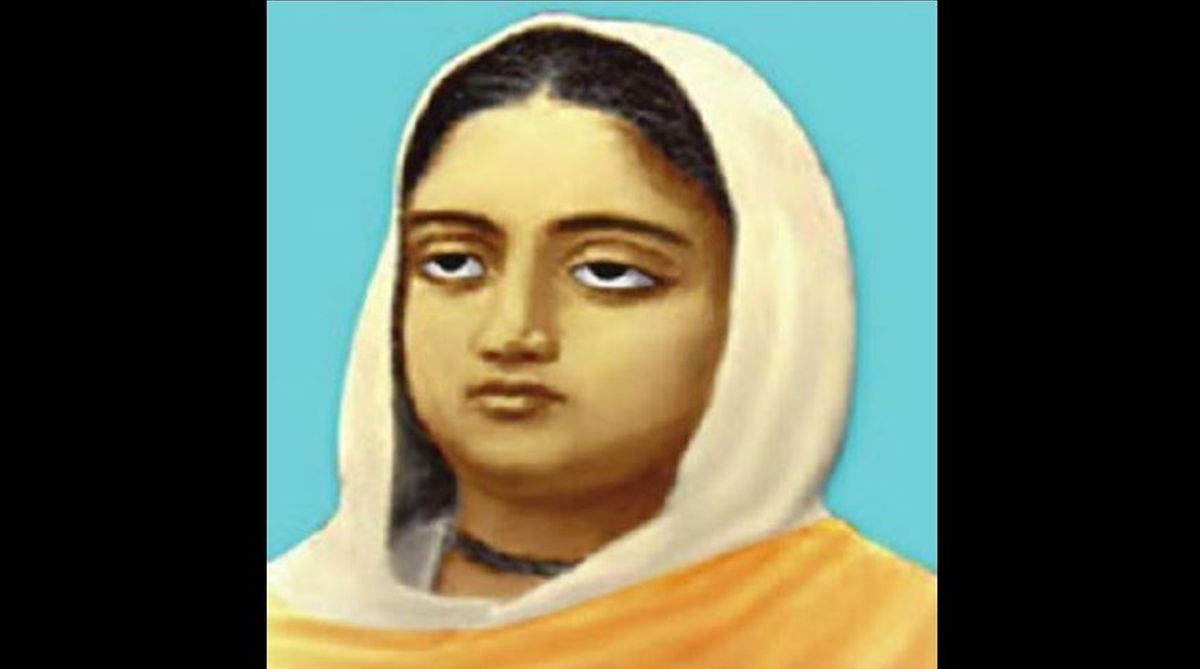Rani Rashmoni (1793- 1861) is known more for her piety and the construction of a magnificent Kali temple at Dakshineswar where Sri Ramakrishna had attained sainthood, and not so much for her determined efforts to help the poor and the helpless, and her munificence in the cause of education and public health and construction of roads, ghats and drainage channels.
She was a woman of liberal ideas and was broadly in sympathy with the contemporary social reform movements. It is not known whether she had any connection with her illustrious contemporaries, pre-eminently Rammohan Roy, Iswarchandra Vidyasagar, Dwarakanath Tagore, Radhakanta Deb. One major reason for the indifference of the contemporary bhadralok literati leading to her relative obscurity is that she was born into a caste considered low in the social scale.
Advertisement
Even her immense fortune and fabulous charity could not alleviate the troubles and hardships in her personal life. The stigma has, perhaps, remained indelible even after a century and a half, as till today there is no well-researched authentic biography of the Rani, although well-equipped Centres for Women’s Studies have been functioning in many universities in the state for the last three decades or more.
Relying on the popular belief that the western side of the Ganga is sacred, Rani searched for land to build a temple; but the Brahmin landlords would not sell land to a low caste woman, nor would they allow her to construct a ghat which they would not use. Eventually, she was given land on the eastern side. But the plot belonged to three different owners ~ one a Muslim, the other a Christian and yet another a Hindu.
The Muslims had an old graveyard, a mazar and a tank named gazi pukur. A double-storied house stood on the land belonging to a certain James Hesty who wanted to build a factory but died prematurely in England. In the land belonging to the Hindu, there was a big banyan tree along with other trees on the bank of the Ganga. The place was called panchabat. The Rani had kept the mazar and the tank, the kuthi and the panchabati not only unchanged, but also had these repaired and maintained.
In fact Sri Ramakrishna also prayed in the mazar. The temple administration was run from Hesty’s kuthi where Ramakrishna also lived from 1855 to 1870. Thus the Rani had consciously created an ambience of inclusiveness within the temple complex. The spell of Rani’s catholicity and humanism was brought to bear on an orthodox Gadadhar Chattopadhyaya, who in course of time, emerged as a tolerant Sri Ramakrishna and announced to the world, “all religions are same in their essence and to serve humanity is to serve God.”
Reliable records on Rani’s method of managing huge estates, extensive business and other properties, her relations with the ryots, her acts of benevolence and her contacts and communications with her illustrious contemporaries, are very sketchy. The estate records and Rani’s personal papers are still not available.
A few biographies in circulation are mostly based on hearsay and some of them are hagiographies rather than biographies. Contemporary newspapers often published scraps of news on Rani and her family. Her deep sympathy for the poor, her courage in times of conflicts with her adversaries like the indigo planters or the East India Company’s Government were part of the contemporary folklore, which still survive in fragments.
Harinath Mazumdar (1833- 1895) popularly known as Kangal Harinath was a poet, a composer of songs and a fearless and uncompromising editor of Grambarta Prakasika, a very popular weekly newspaper in rural Bengal. After its first publication in 1863, for nearly 25 years it would fearlessly publish the instances of mismanagement and oppression of the zamindars and their amlas (estate officials), and corruption and high-handedness of the government officials in east and north Bengal, often leading to some redress or punishment of the guilty.
When Harinath wrote in his paper that the ryots in Rashmoni’s zamindari (Rashmoni passed away in 1861) were better off than those in the zamindari of the Tagores, one could not, perhaps, brush them aside lightly; nor could one ignore the report that the indigo planters had failed to lure the ryots to indigo cultivation in Rashmoni’s zamindari.
Because of her poor peasant background, Rashmoni could easily realise the plight of the peasantry under a system of forced cultivation of indigo on the strength of an advance (dadan) given by the planters. One of the items in her father-in- law’s business was indigo which was cultivated in his estate; but cultivation of and trade in indigo were drastically reduced when her husband Raj Chandra succeeded his father.
After her husband’s death in 1836, Rani, if we believe Harinath, nearly stopped indigo cultivation even in Makimpur pargana where indigo cultivation was extensive. To start with, one of the most oppressive British planters was badly beaten up and the nil-kuthi was partly destroyed by the lathials mobilized under the orders of the Rani from different parts of her zamindari.
Other planters gradually withdrew on being persuaded by the Rani’s amlas. This was, as it were, a dress rehearsal, under Rani’s inspiration and guidance of the Indigo Rebellion to take place nearly three decades later.
Dwarakanath Tagore (1794- 1846) was the richest indigo planter and trader in Bengal. According to Dwarakanath’s biographer, Kshitindranath Tagore, a nephew of Rabindranath, “The most extensive business in indigo belonged to the Carr-Tagore Company, and Dwarakanath used to run the business in the name of the company.
The company was so deeply involved in the indigo trade that its office was known to the people as ‘The Indigo Mart’.” The biographer lamented that years later Rabindranath had consigned to flames all papers relating to Dwarakanath’s business. The poet was well aware of the nature of indigo cultivation, and, perhaps, to protect the family from the infamy of an oppressive business practice, he destroyed the papers.
Rani had a deep insight into the problems of the poor and the helpless, and had the mental vigour of working out a manly solution. As a matter of fact, her responses to the world of power and conflict that characterized the 19th century Bengal society, were always courageous and even audacious.
When some fishermen were deprived by the Government of their traditional right of fishing in the stretch of the Ganga in front of Calcutta on the ground of hindrance to navigation, and the poor fishermen did not get any help from other influential men of the city, Rasmoni stood by their side. She took that part of the river on lease paying a fair amount to the Government and allowed the fishermen to fish.
After some time she stopped plying of river craft, including the Company’s ships through the lease-hold stretch of the Ganga by putting up strong iron chains across the river. In reply to an agitated Company, she replied that as a result of disturbances created by the boats and ships she was not getting adequate return from the property she had taken on lease and as a consequence she was incurring heavy losses. The Government got the point and allowed the fishermen to fish. The lease was cancelled and the Rani got back the money.
One night when a noisy religious procession was passing through the road from Janbazar (Rani’s house) to Babughat, the Europeans who lived nearby were annoyed. The police registered a case and dispersed the procession. Rashmoni had to pay a fine. Thereafter she fenced off the road with huge logs and stopped its use as a public thoroughfare.
She told the protesting Government that either they would purchase the land and construct a public road or they should allow her to use her property the way she liked. The Government had to agree to her suggestions and even had to return the amount she had paid as fine. Rani had often defied state power by intelligently basing her arguments on the right to private property which was sacrosanct in the 19th century.
Rashmoni faced her problems with defiance, courage and astuteness which were quintessentially male traits, but she imbibed them with honour, dignity and grace. In an age when in Hindu society women were objects of sympathy and pity, when they were physically endangered as a result of cruel customs like sati, child marriage or rigorous rules of abstinence for widows, Rashmoni by her independence of character and vigour of actions broke the age-old gender stereotype in society and took the first positive step towards women’s liberation. But unfortunately, she is yet to get her rightful place in the social history of Bengal.
The writer is a retired IPS officer. He has written books on the pre-independence revolutionary movement, on global terrorism, on Iswarchandra Vidyasagar and Sri Aurobindo both in English and Bengali.











